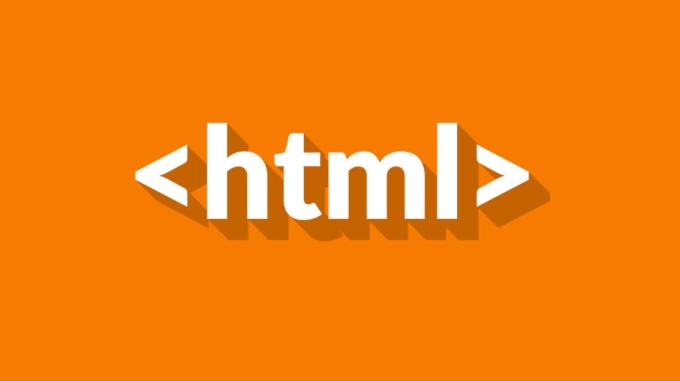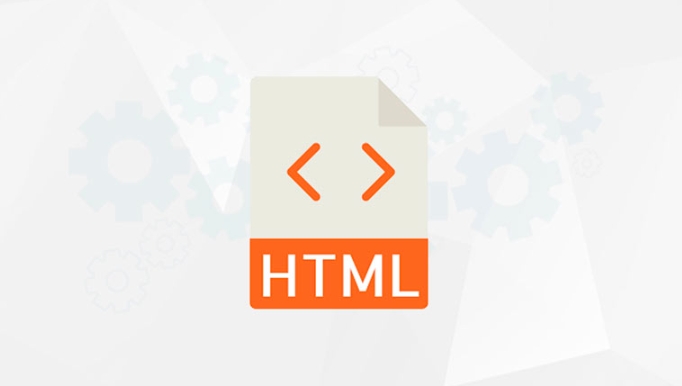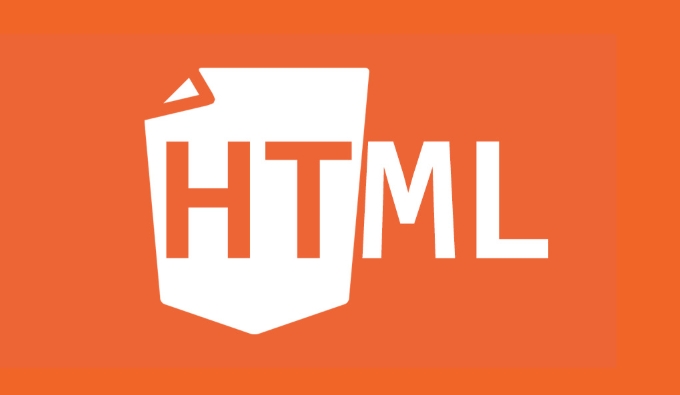HTML Performance Budgeting Techniques
When optimizing web page performance, you need to pay attention to HTML structure and volume control to improve loading speed and rendering efficiency. First, you should control the size of HTML files, avoid redundant tags, use semantic tags, delete comments, spaces and redundant attributes, and compress HTML through tools such as html-minifier; secondly, reduce the number of DOM nodes, keep the number of page nodes within 1500, use CSS casing and inheritance to reduce the style complexity, and clean up the dynamically generated zombie nodes; again, optimize the key rendering path, reasonably place CSS and JS, use defer or async to load scripts, and load key resources in advance; finally, reasonably adopt server-side rendering (SSR) or static generation (SSG), combine the cache mechanism and streaming rendering to gradually display the content, thereby significantly improving the loading speed and user experience of the first screen.

When doing web performance optimization, HTML itself is often ignored. In fact, HTML is the basis of the entire page, and its structure and size directly affect the loading speed and rendering efficiency. Controlling the "volume" and "complexity" of HTML is an important part of performance budget.

Control HTML file size
If the HTML file is too large, it will cause the first loading time to be longer, especially in mobile network environments to have more obvious impact. A common approach is to set the upper limit of file size, such as the HTML on the first screen should not exceed 10KB.
- Avoid redundant tags, such as unnecessary
<div> or <code><span></span> - Replace multiple nested universal containers with semantic tags
- Delete comments, spaces, and redundant properties (such as
type="text/javascript") - Keeping the number of nodes within 1500 per page is a good reference value
- Multiple CSS Cascade and inheritance, reducing the addition of classes or styles to each element
- For dynamically generated content, make sure that "zombie nodes" are not generated
- Put CSS and JS in the right place to avoid blocking HTML parsing
- Loading non-critical scripts using
deferorasync - Load key resources in advance, such as using
<link rel="preload"> - SSR/SSG can reduce the waiting time for blank pages
- Use caching mechanism to speed up HTML output
- Dynamic content can be displayed step by step in combination with "stream rendering"
Some projects will add HTML compression tools to the build process, such as using html-minifier to automatically clean up useless content, which can easily reduce volume by 20% to 30%.

Reduce the number of DOM nodes
The more DOM nodes, the longer the browser parses and renders it, which will also affect the performance of subsequent JavaScript operations. It is recommended to conduct regular reviews of the DOM structure to avoid excessive nesting.
You can use Chrome DevTools' Performance panel to view the DOM tree size and rendering time, which is helpful for positioning bottlenecks.

Optimize critical rendering paths
HTML is the first step in building a rendering tree, so make it parsed as quickly as possible and enter the rendering stage. There are a few tips to improve this process:
For example, introducing critical CSS early in HTML can allow the browser to start drawing pages faster, rather than waiting for the entire document to be parsed before starting.
Use server-side rendering (SSR) or static generation (SSG) reasonably
For content-driven websites, direct output of HTML on the server can significantly improve the first-screen speed. Compared with client rendering, users can see content faster and improve search engine friendliness.
Nowadays, many modern frameworks support these modes, such as Next.js, Nuxt.js or Eleventy, just select the suitable plan for the project.
Basically that's it. HTML seems simple, but the details are handled well, which is very critical to improving overall performance.
The above is the detailed content of HTML Performance Budgeting Techniques. For more information, please follow other related articles on the PHP Chinese website!

Hot AI Tools

Undress AI Tool
Undress images for free

Undresser.AI Undress
AI-powered app for creating realistic nude photos

AI Clothes Remover
Online AI tool for removing clothes from photos.

Clothoff.io
AI clothes remover

Video Face Swap
Swap faces in any video effortlessly with our completely free AI face swap tool!

Hot Article

Hot Tools

Notepad++7.3.1
Easy-to-use and free code editor

SublimeText3 Chinese version
Chinese version, very easy to use

Zend Studio 13.0.1
Powerful PHP integrated development environment

Dreamweaver CS6
Visual web development tools

SublimeText3 Mac version
God-level code editing software (SublimeText3)
 Using HTML `input` Types for User Data
Aug 03, 2025 am 11:07 AM
Using HTML `input` Types for User Data
Aug 03, 2025 am 11:07 AM
Choosing the right HTMLinput type can improve data accuracy, enhance user experience, and improve usability. 1. Select the corresponding input types according to the data type, such as text, email, tel, number and date, which can automatically checksum and adapt to the keyboard; 2. Use HTML5 to add new types such as url, color, range and search, which can provide a more intuitive interaction method; 3. Use placeholder and required attributes to improve the efficiency and accuracy of form filling, but it should be noted that placeholder cannot replace label.
 How to add an icon to your website title tab in HTML
Aug 07, 2025 pm 11:30 PM
How to add an icon to your website title tab in HTML
Aug 07, 2025 pm 11:30 PM
To add an icon to the website title bar, you need to link a favicon file in part of the HTML. The specific steps are as follows: 1. Prepare a 16x16 or 32x32 pixel icon file. It is recommended to use favicon.ico to name it and place it in the website root directory, or use modern formats such as PNG and SVG; 2. Add link tags to HTML, such as PNG or SVG formats, adjust the type attribute accordingly; 3. Optionally add high-resolution icons for mobile devices, such as AppleTouchIcon, and specify different sizes through the sizes attribute; 4. Follow best practices, place the icon in the root directory to ensure automatic detection, clear the browser cache after update, and check the correctness of the file path.
 Why is my HTML image not showing up?
Aug 16, 2025 am 10:08 AM
Why is my HTML image not showing up?
Aug 16, 2025 am 10:08 AM
First, check whether the src attribute path is correct, and ensure that the relative or absolute path matches the HTML file location; 2. Verify whether the file name and extension are spelled correctly and case-sensitive; 3. Confirm that the image file actually exists in the specified directory; 4. Use appropriate alt attributes and ensure that the image format is .jpg, .png, .gif or .webp widely supported by the browser; 5. Troubleshoot browser cache issues, try to force refresh or directly access the image URL; 6. Check server permission settings to ensure that the file can be read and not blocked; 7. Verify that the img tag syntax is correct, including the correct quotes and attribute order, and finally troubleshoot 404 errors or syntax problems through the browser developer tool to ensure that the image is displayed normally.
 How to use the HTML abbr tag for abbreviations
Aug 05, 2025 pm 12:54 PM
How to use the HTML abbr tag for abbreviations
Aug 05, 2025 pm 12:54 PM
Using HTML tags can improve the accessibility and clarity of content; 1. Mark abbreviations or acronyms with abbreviations; 2. Add title attributes to unusual abbreviations to provide a complete explanation; 3. Use when the document first appears, avoiding duplicate annotations; 4. You can customize the style through CSS, and the default browser usually displays dotted underscores; 5. It helps screen reader users understand terms and enhance user experience.
 How to add an icon to a button in HTML
Aug 07, 2025 pm 11:09 PM
How to add an icon to a button in HTML
Aug 07, 2025 pm 11:09 PM
Using FontAwesome can quickly add icons by introducing CDN and adding icon classes to buttons, such as Like; 2. Using labels to embed custom icons in buttons, the correct path and size must be specified; 3. Embed SVG code directly to achieve high-resolution icons and keep them consistent with the text color; 4. Spacing should be added through CSS and aria-label should be added to the icon buttons to improve accessibility; in summary, FontAwesome is most suitable for standard icons, pictures are suitable for custom designs, while SVG provides the best scaling and control, and methods should be selected according to project needs. FontAwesome is usually recommended.
 How to use the bdo tag to override text direction in HTML
Aug 16, 2025 am 09:32 AM
How to use the bdo tag to override text direction in HTML
Aug 16, 2025 am 09:32 AM
Thebdotagisusedtooverridethebrowser’sdefaulttextdirectionrenderingwhendealingwithmixedleft-to-rightandright-to-lefttext,ensuringcorrectvisualdisplaybyforcingaspecificdirectionusingthedirattributewithvalues"ltr"or"rtl",asdemonstrat
 Extract nested URLs from dynamic web pages using R language: httpr and API interaction practice
Aug 27, 2025 pm 07:06 PM
Extract nested URLs from dynamic web pages using R language: httpr and API interaction practice
Aug 27, 2025 pm 07:06 PM
This tutorial explores the problem of crawling failure if JavaScript dynamically loads content when crawling URLs from web pages using the R language rvest package. The article explains in detail why traditional HTML parsing methods may be invalid and provides an efficient solution: by identifying and directly calling the API interface behind the web page, using the httr package to obtain JSON data, thereby successfully extracting the required information.
 What is the difference between HTML id and class
Aug 07, 2025 am 12:03 AM
What is the difference between HTML id and class
Aug 07, 2025 am 12:03 AM
The id must be unique. One id in each page can only be used for one element, and the class can be reused on multiple elements, and one element can have multiple classes; 2. Scenarios using id include: positioning a single specific element, link anchors within the page, JavaScript operates elements through id, and labels associated with form elements; scenarios using class include: applying the same style or behavior to multiple elements, building reusable UI components, and selecting multiple elements in JavaScript; 3. In CSS, targeting is done by #id selector and .class selector respectively, getElementById() is used for id, getEleme







